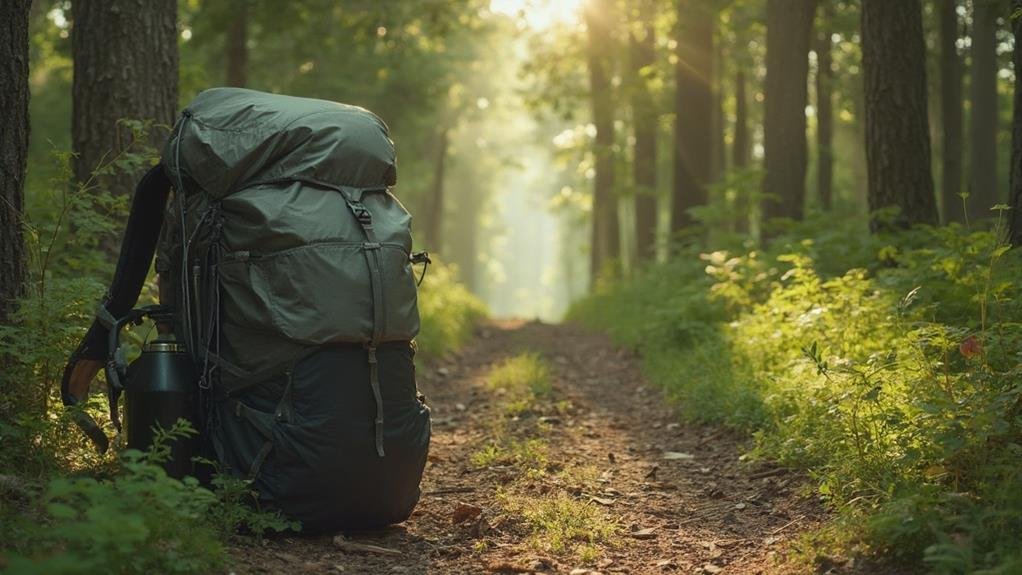
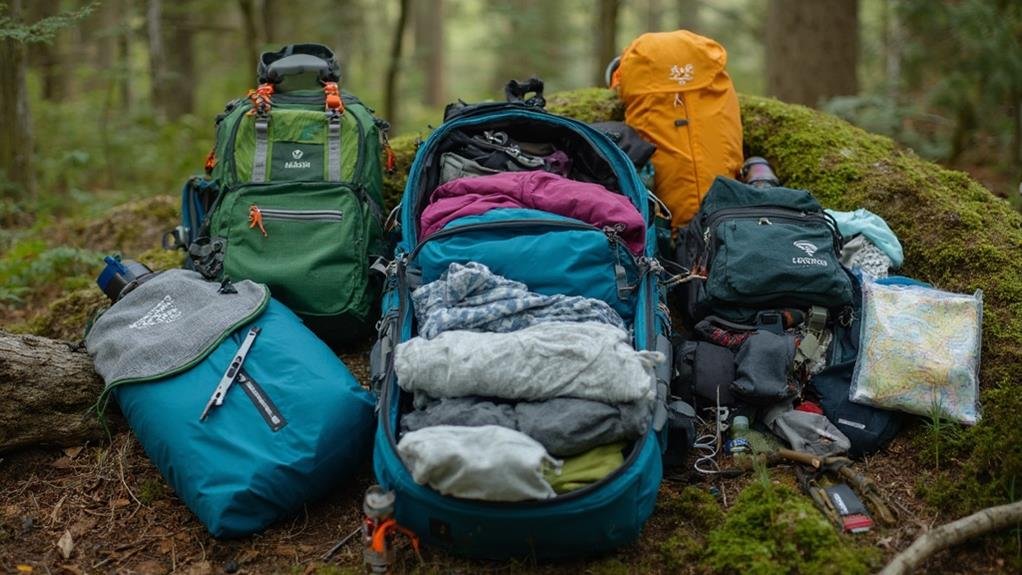
Starting a multi-day backpacking adventure requires more than just enthusiasm; it demands smart packing. You've got to carefully consider gear, weight distribution, and organization to guarantee a successful trip. Start by choosing the right backpack, one that offers support and comfort. Then, focus on essential items, prioritizing lightweight shelter and cooking tools. But what about clothing? Opt for moisture-wicking, versatile options that can handle unpredictable weather. With everything packed just right, you'll wonder how to optimize space and accessibility. Curious about how to keep it all efficient and manageable on the trail?
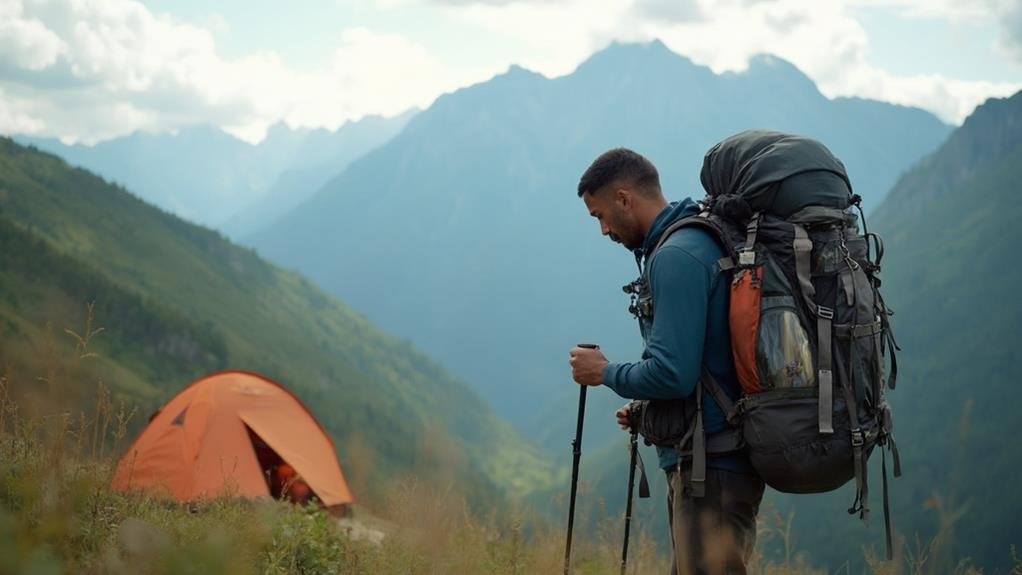
When choosing the right backpack for a multi-day adventure, consider the duration of your trip and the gear you'll need to carry. Picking a backpack isn't just about style; it's about finding one that suits your hiking needs.
Think about backpack types, like frameless, internal frame, or external frame options. Frameless backpacks are lightweight, great for shorter trips, but they may not offer the best support for heavy loads. Internal frame backpacks are popular because they hug your body, offering excellent weight distribution, which is essential for longer hikes. They keep the load close, helping you maintain balance on rocky trails.
External frame backpacks, on the other hand, are fantastic for carrying bulky gear and allow for better ventilation on your back. They might feel old-school, but if you're trekking with a lot of equipment, they're worth considering.
Whatever type you choose, make certain the backpack fits you well. Check the shoulder straps, hip belt, and back panel for comfort and adjustability. A well-fitting pack guarantees the weight is distributed evenly, making your adventure more enjoyable.
Packing wisely is essential for a successful multi-day backpacking adventure. Start by prioritizing essential gear to guarantee you've got everything you need without lugging around unnecessary weight.
First, consider your gear weight carefully. Every ounce counts when you're hiking for hours, so focus on packing only the items truly necessary for your survival and comfort.
Begin with your shelter, like a lightweight tent or a durable hammock, and a sleeping system that provides warmth without bulk. Your cooking gear should include a compact stove and a lightweight pot, alongside instant meals to keep things simple.
Always pack a reliable water filtration system, as staying hydrated is critical.
Don't forget emergency supplies, like a first-aid kit, a multi-tool, and a fire starter. These can be lifesavers if you encounter unexpected challenges on the trail. A map and compass are also essential, even if you're bringing a GPS device, as batteries can die unexpectedly.
Streamline your choices by considering multi-purpose items. For example, a bandana can serve as a head covering, a towel, or even a sling.
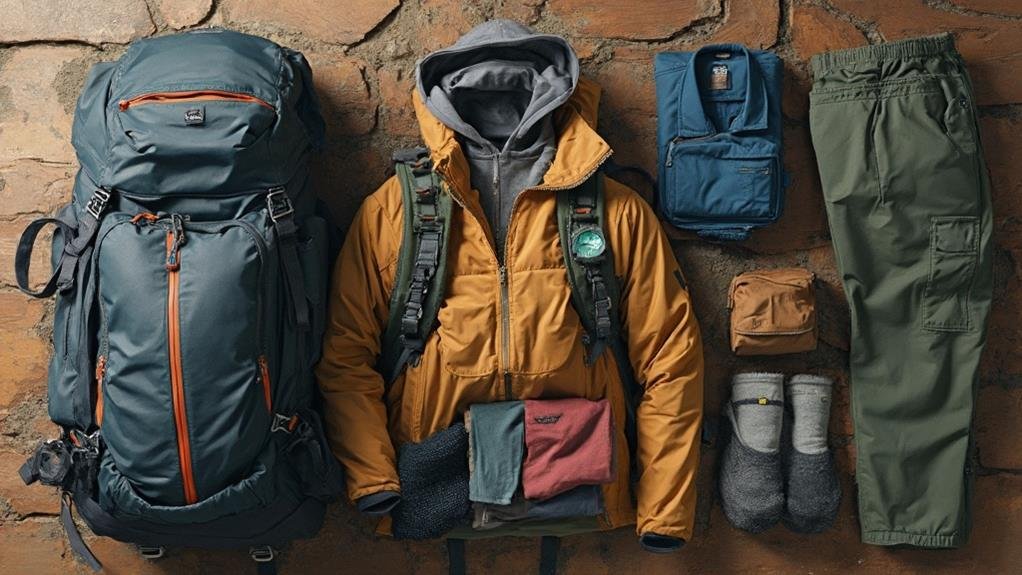
Once you've prioritized your gear, it's time to focus on clothing that enhances comfort and adaptability on your backpacking adventure. Packing smart means using layering techniques and making the right fabric choices.
Start with a moisture-wicking base layer to keep sweat away from your skin. This helps you stay dry and warm when temperatures drop. A mid-layer, like a fleece or a lightweight insulated jacket, provides extra warmth. Finally, pack a waterproof and windproof outer layer to protect against unpredictable weather.
Consider these key items to guarantee you're prepared for any conditions:
Think about your fabric choices carefully. Merino wool is great because it resists odors, making it perfect for multi-day trips.
Synthetic fabrics dry quickly, which is handy if you get caught in rain. By layering strategically, you'll be ready for whatever nature throws your way.
For a successful multi-day backpacking trip, you'll need to carefully plan your food and cooking essentials. Start by considering your meal planning, ensuring you pack enough calories to sustain your energy levels for long hikes. Think about lightweight, high-energy foods like nuts, dried fruits, and instant oatmeal.
Don't forget protein-rich options such as jerky or tuna packets. Varied meals will keep your spirits high, so consider packing a few different flavors and textures.
Next, focus on your cooking methods. A lightweight stove is a backpacker's best friend. Look for one that's compact and easy to use. Many hikers swear by canister stoves because they're efficient and quick.
However, if you're in an area where campfires are allowed, a small campfire can be a delightful way to cook your meals, though it requires more effort and planning.
Don't overlook the importance of a reliable pot and a spork. These multi-use tools can save space and weight in your pack.
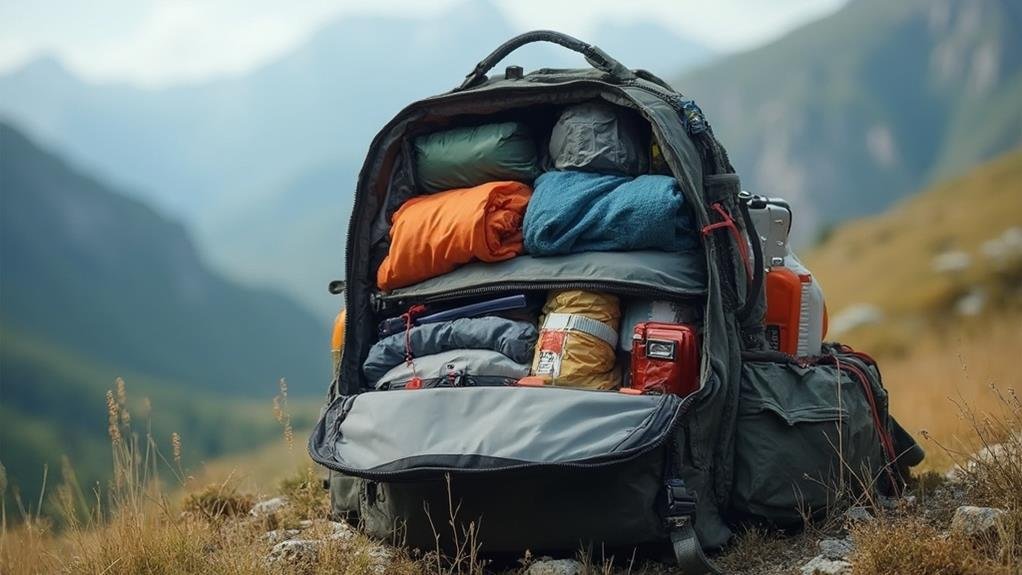
When it comes to organizing your backpack, efficient packing can make all the difference in your comfort on the trail. You want to make sure everything's in the right place so you're not fumbling around when you need something.
First, consider weight distribution techniques. Keep heavier items like your tent or cooking gear closer to your back, ideally between your shoulder blades. This helps your backpack balance better, making it easier and more comfortable to carry.
Packing cubes are a game-changer for keeping your gear organized. Use them to separate your clothes, toiletries, and other essentials. This way, you can find what you need without unpacking everything. Plus, they help compress your items, saving space.
Here's a quick list to help you out:
Following these tips can save you time and hassle, letting you enjoy your adventure without unnecessary stress.
Happy trails!
Sign up for our newsletter to receive the latest gear reviews, tips, and exclusive offers. Stay informed and inspired for your next outdoor adventure!